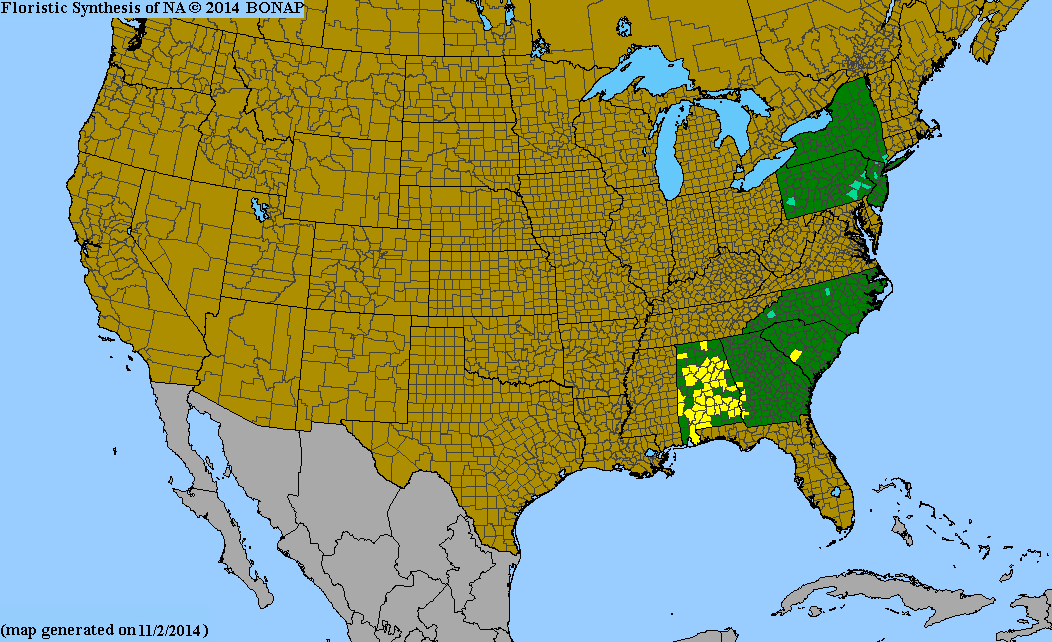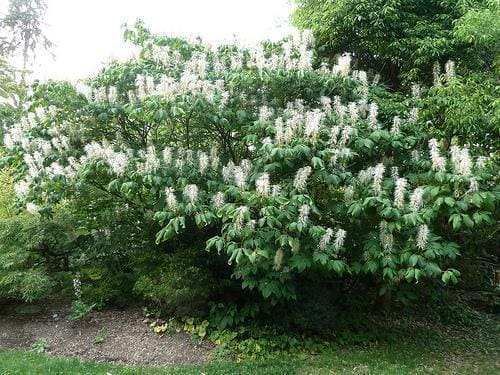Hippocastanaceae
bottlebrush buckeye
Aesculus parviflora
Other Common Names
dwarf buckeye
Plant Type
Shrub (less than 10 ft)
Life Cycle
Perennial
Typical Size
8-12 ft. tall
8-15 ft. wide
Tolerant of
Drought
Inolerant of
Poorly Drained Soil
Propagation
By seed, By cutting
Plant Propagation Notes
Seed must be sown immediately after collection and never allowed to dry out. Softwood cuttings can be successful with a mister. Commercially propagated by root cuttings.
Plants/Diseases
No serious insect or disease problems. Less susceptible than other species of Aesculus.
Wildlife Benefits
Nectar/pollen source for pollinating insects, Nectar source for hummingbirds
Leaves
The compound (pinnate, bipinnate, or palmate), opposite leaves have serrate leaf margins, are pubescent, and are up to 6 inches long by 1-3 inches wide.
Toxicity
All parts of the shrub are poisonous if ingested. This plant is highly toxic and may be fatal if ingested.

USDA Hardiness Zones
4, 5, 6, 7, 8
Light Exposure
Part Sun/Shade
Soil Moisture
Moist
Soil Drainage
Well-drained
Soil pH
Acidic (less than 6.0)
Native in South Carolina?
Yes
Plant Native Habitat
Rich, mesic woods; moist ravines.
Global Conservation Status (NatureServe)
Vulnerable (G3)
Federal Conservation Status (USFWS)
Not Listed
Distribution Notes
Rare in the SC Piedmont and absent from the Coastal Plain and Mountains.

